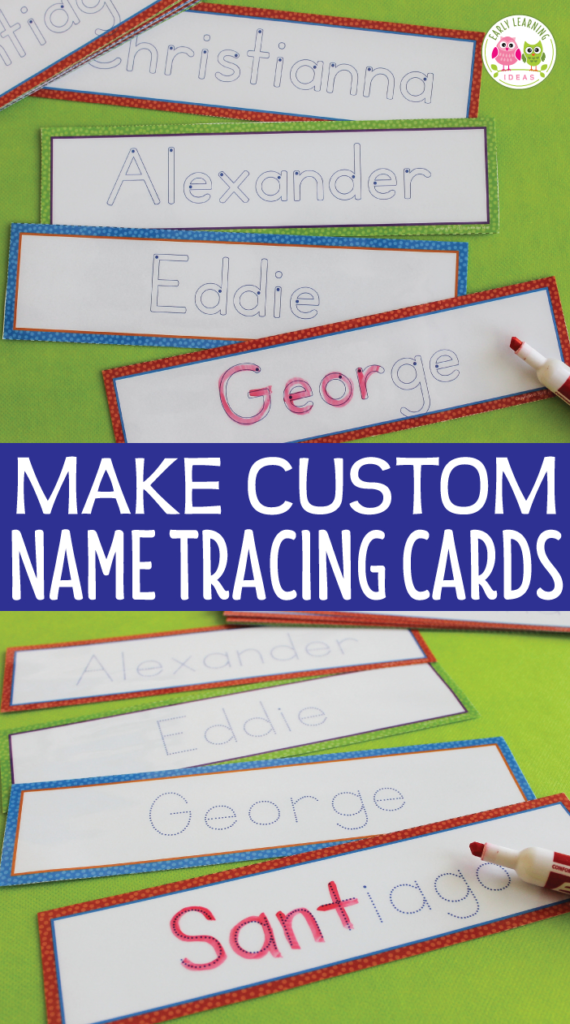Editable Name Tracing Cards – The name tracer exercise is an early handwriting exercise that helps children develop their handwriting abilities. Children trace the dots that compose letters and then write their names. This practice provides an easy and enjoyable way for children to learn about letters and spelling of their name.
Why does name tracer matter?
The development of a child is affected by name tracing. In addition to helping children learn their name and identifying their names, this game can also help improve hand-eye coordination, enhance motor skills, as well as promote self-identity. Name tracing provides the basis for understanding the writing process, which is a complex task.
The Science Behind Name Tracing
Name Tracing and Cognitive Development
These activities aren’t just for entertainment. They can have a huge impact on the child’s cognitive growth. When they trace their names, children learn to identify letters and their order. This is an important element in the development of early literacy skills.
Name Tracing and handwriting
Name tracing can aid children develop handwriting. Children learn to control their movements by constantly tracing their names. They also build a muscle memory. This is essential in learning how to write without a guide.
How to Implement Name Tracing successfully
Selecting the Best Materials
It’s crucial to choose the right materials prior to you begin tracing names. You’ll need tracing paper or a dry erase board for reusable practice, markers or crayons that are easy for little hands to grip, and a template with the child’s name written in drawn lines.
Introduction to the Activity
Introduce the idea of name tracing your child by demonstrating their name and exaggerating each letter. Explain how to trace the letters. Encourage them to do it yourself. Instruct them that it’s okay to fail if they don’t succeed the first time.
Practical Tips
It should be a fun game. Incorporate different colors or glitter pens to make it more exciting. If you are able to praise your child’s efforts instead of focusing on their output, it can help to create a positive environment.
A fresh method of name tracking
Digital Name Tracing
With technology advancements, name tracking has taken a digital direction. Children can trace their personal names on smartphones and tablets by using a variety of applications. This is a new approach to name tracing that can be interactive and enjoyable.
Name Tracing Apps
Apps like “Name Trace,”” Writing Wizard,” and Tracing ABC are useful tools for name-tracing. They are both educational as well as entertaining.
The conclusion of the article is:
Recap and Final Thoughts
It is important for a child to learn the art of writing their name. This easy task provides the foundations for literacy handwriting, as well as cognitive growth. It helps children to recognize letters and understand their order. By creating an engaging environment and selecting appropriate materials and using technology, parents and teachers can make name tracing an enjoyable experience for kids.
FAQs
- What exactly is the meaning of name tracing?
- Name tracing assists children in learning to write letters in their names. They trace the line of dots that spells their name, which helps them to become acquainted with letters and their sequence.
- Q: Why is name tracing vital?
- A: Name-tracing is essential because it promotes hand-eye cooperation, refines motor skills, and helps the child recognize his or her own identity. It also helps to establish the foundations for more sophisticated writing.
- How do I get my child to name trace
- Start by pointing out each letter and showing the child your name. Next, show them how to draw each letter. Remind them to be patient, and remind them it’s ok to fail the first few times.
- A: Yes. Numerous apps and online platforms offer name-tracing exercises. These digital resources for children can be interactive.
- Q: What practical tips can you offer me to trace a name?
- A: Make tracing names an exciting and fun activity. Utilize different colors or pens to make it more exciting. To create an environment of positive learning, you should also praise your child’s efforts instead of their work.





